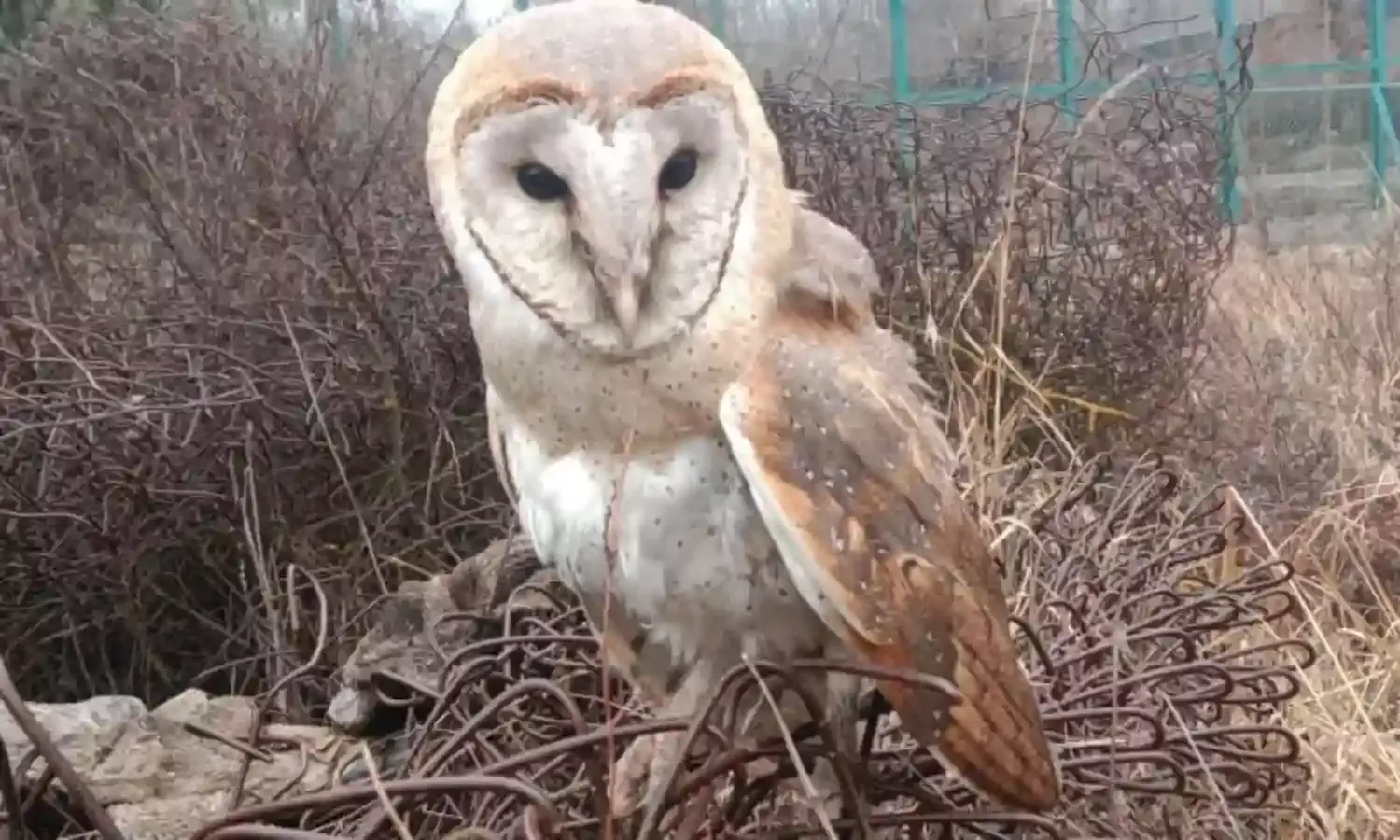Capturing Owls Can Land You In Jail
“Anyone involved in capturing owls, or any kind of hunting activity will face strict action including imprisonment as well as fines in Kashmir," the Department of Wildlife Protection Jammu and Kashmir has sounded a stern warning. It was issued after multiple incidents of alleged capturing of owls were reported from some parts of the Valley over the past month.
The snow-peaked mountains of the Kashmir valley are home to many elusive animals, birds and reptiles, endemic to the region. India is home to 30 species of owls, all protected under the Wildlife (Protection) Act. Numerous omens and myths are also associated with owls. They are seen as symbols of luck and wisdom, while their screech is considered an omen of death by some.
After a few photographs of the owl species, especially the Barn Owl and Tawny Owl, being captured surfaced on social media in Jammu and Kashmir recently, the wildlife department issued a notice warning that capturing by snaring, trapping, driving or baiting of any wild animal, including wild birds, comes under the definition of “hunting” which is a punishable wildlife offence under Section 51 of the Wildlife (Protection) Act, 1972.
“A person committing such an offence “shall on conviction be punishable with imprisonment for a term which may extend to three years or with a fine which may extend to 20,000 rupees or both”, the department warned.
According to the notice, anyone coming across a wild bird which has been accidentally injured or seems to be in distress should not attempt to handle or rescue the bird but immediately contact the wildlife department.
Dr Bilal Nasir Zargar, a wildlife biologist said that there is a myth in Kashmir that keeping owl's nails wards off evil. People catch the owls and cut their nails off and the bird eventually dies. This is one of the reasons for the decline in the population of owls in the region.
Owls play an important role in controlling the rodent population, and also stop the spread of zoonotic diseases. Dr Zargar said the warning by the wildlife protection department was not enough because there are some species of owls that are already threatened at this point in time. These species may not be able to survive for much longer in the wild due to hunting or destruction of their habitat.
“It isn’t too late though to help these owl species to have a future. However, in order for this to happen, we need to acknowledge what the problems really are, then we can be a part of the solution and not the problem,” he said.
“Building social awareness against superstition will help implement stringent legal action against poaching and trading. There is no place for the owls to nest and breed due to rapid urbanisation. Their habitat must be protected, and their nesting places saved,” he added.
Dr Bilal Nasir, who holds a PhD. in Botany, was the first to record a long-eared owl in 2019 at Manasbal. He has been observing the behaviour of owls for the last five years and is one of the most famous and passionate nature photographers in Kashmir. “I enjoy taking photos of birds and animals in jungles and forests. I have travelled extensively to many national and international sanctuaries,” he said. Dr Nasir has educated and inspired thousands of people towards the conservation of nature and has received many awards.
Another expert said it is a myth that owls can rotate their heads 360 degrees. “They can actually turn their necks 135 degrees in either direction which gives them 270 degrees of the total movement,” he said, adding, “Not all species of owls are nocturnal. Many times you might just spot an owl in the day peeping out from its home on the tree. When there is a shortage of food, owls may hunt at any time during the day. They are carnivorous and eat rodents, small and medium-sized mammals, insects, fish, and other birds. Sometimes they even eat smaller owls.”
Divisional Forest Officer (DFO) Wildlife Department Ifshana said owls are a scheduled species, and capturing these birds breaches the Wildlife Protection Act. “Recent reports suggest that only two owl-capturing incidents took place following which an advisory was issued for their protection,” she said, adding, “Capturing owls is a severe crime. Anybody involved in it will be held under the relevant sections of law and a case will also be filed against such a person.
Experts say owls, as birds of prey, play a crucial role in balancing the ecosystem and as friends of farmers, keeping rodents in check. They also have a strong cultural significance and often elicit strong emotions ranging from fascination, awe, hate, to disdain. The continuing trend of these birds being exploited for illegal trade needs to be negated through concerted action. A strong citizen support, generated through public awareness can go a long way in their conservation.
Photos:Wildlife SOS, Aliya Mir.




